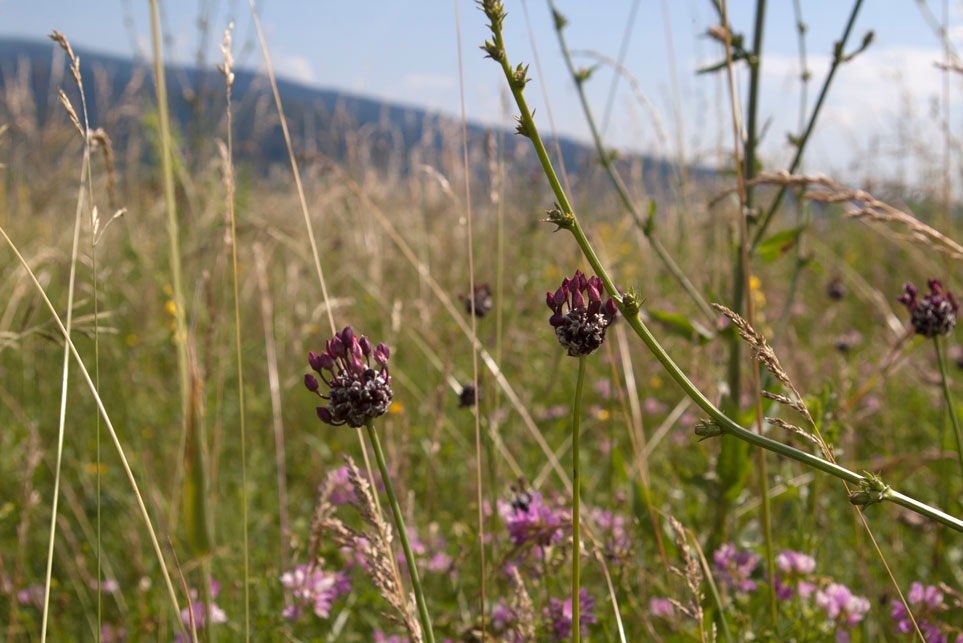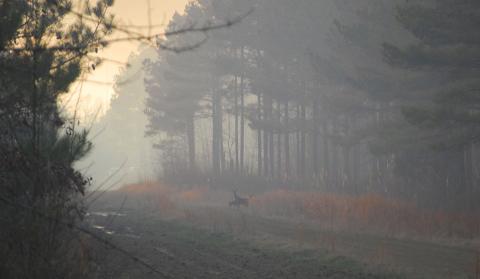Dr. Brooks Tiller
Field garlic is all over the place. We often step on and over it as field garlic covers fields and open areas. As it sprouts in the fall, growing up to two feet tall, and is ready to be harvested in the winter and spring. It has a strong onion smell and looks like chives with its long, slender, tubular green leaves.
Field garlic is a member of the lily family. It is one of those plants that once identified, is easily recognized all over the place. It grows in our yards, and in almost every single field or opening that we walk through. It does very well under deciduous trees that do not sprout leaves until the late spring.

IDENTIFICATION
- Long narrow slender tubular green leaves that are hollow
- Leaves can grow up to two feet tall.
- The underground bulbs look like miniature onions growing together in clusters.
- Field garlic blooms in the late spring with pink and white flowers.
SIMILAR PLANTS
Wild onion (Allium canadense) has flat leaves and only grows 12-14 inches. Wild onions also have a strong onion odor and are edible.
Fly poison (Amianthium muscaetoxicum) is the most dangerous look alike which has a smooth stem top with six white to green petal flower. Also, watch out for death camas (Zigadenus species). These do not smell like garlic or onion. If it smells like garlic or onion then it is not poisonous.
GATHER
Field garlic grows abundantly in fields, open woods, and turned soil. Sprouting in fall and ready for harvest in winter and spring. The whole plant can be harvested and eaten. Dig up the bulbs with roots attached or just snip off the green tops.
FUTURE HARVEST
Field garlic is ephemeral, dying back to the ground when temperatures start warming up for summer. It is common and a great self-seeder, but it is a good idea to not harvest all the field garlic from any one spot. If the tops are clipped off, it will continue to grow and can be harvested several times throughout the winter and spring.
PREPARATION AND EATING
With a taste of pungent onions with a touch of garlic, field garlic is great in recipes that call for onion, garlic, or chives. Utilize the green tops like chives and use the bulbs with roots attached in place of onions.
Chop the leaves to add into an omelet topped with bacon. Or use the entire plant to add flavor to broths, soups, and roast.
CAUTION
Avoid foraging in urban areas as field garlic will absorb pollutants in the soil. Heavy metals, toxins, and chemicals are more common in the soil of urban areas and near roads.
Fly poison (Amianthium muscaetoxicum) is the most dangerous look alike which has a smooth stem top with six white to green petal flower. Be aware of death camas (Zigadenus species). These do not smell like garlic or onion. If it smells like garlic or onion then it is not poisonous. These toxic look-alikes have no smell.
FIELD GARLIC:
- Long narrow leaves that grow in bunches
- Hollow leaves
- Leaves can grow up to two feet tall
- Underground bulbs
- Smells like onion
- Umbrella-like pink and white flower blooms in late spring

Need wild game meat for a recipe you've been wanting to try? Check out GameKeeper Butchery. GameKeeper Butchery is dedicated to procuring the finest assortment and highest quality of specialty meats from the United States and around the world. Our commitment is to deliver the safest, freshest and most wholesome products.






























